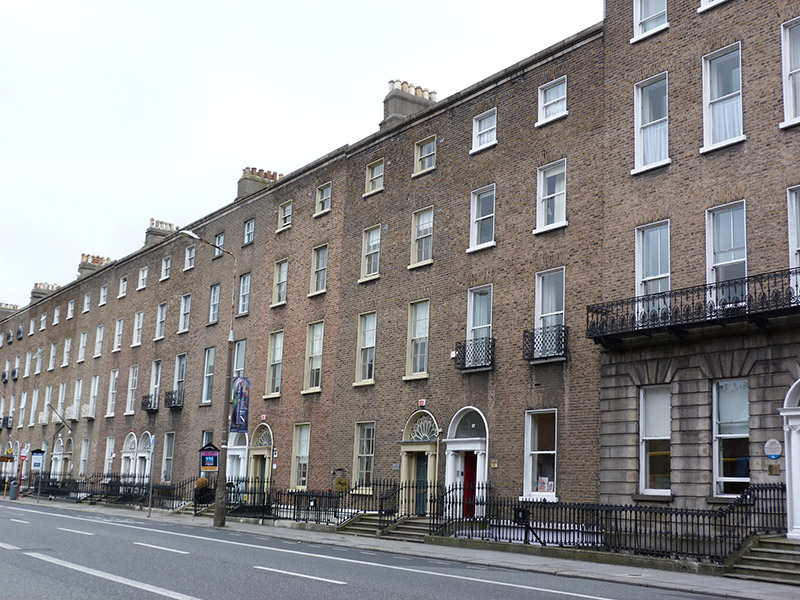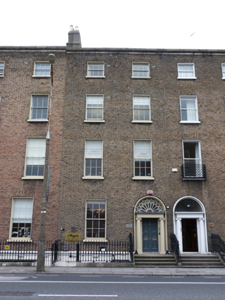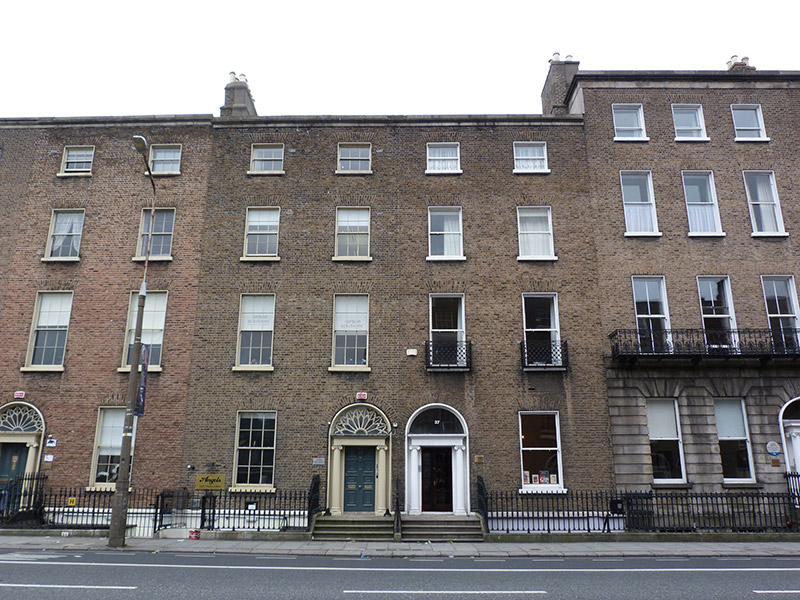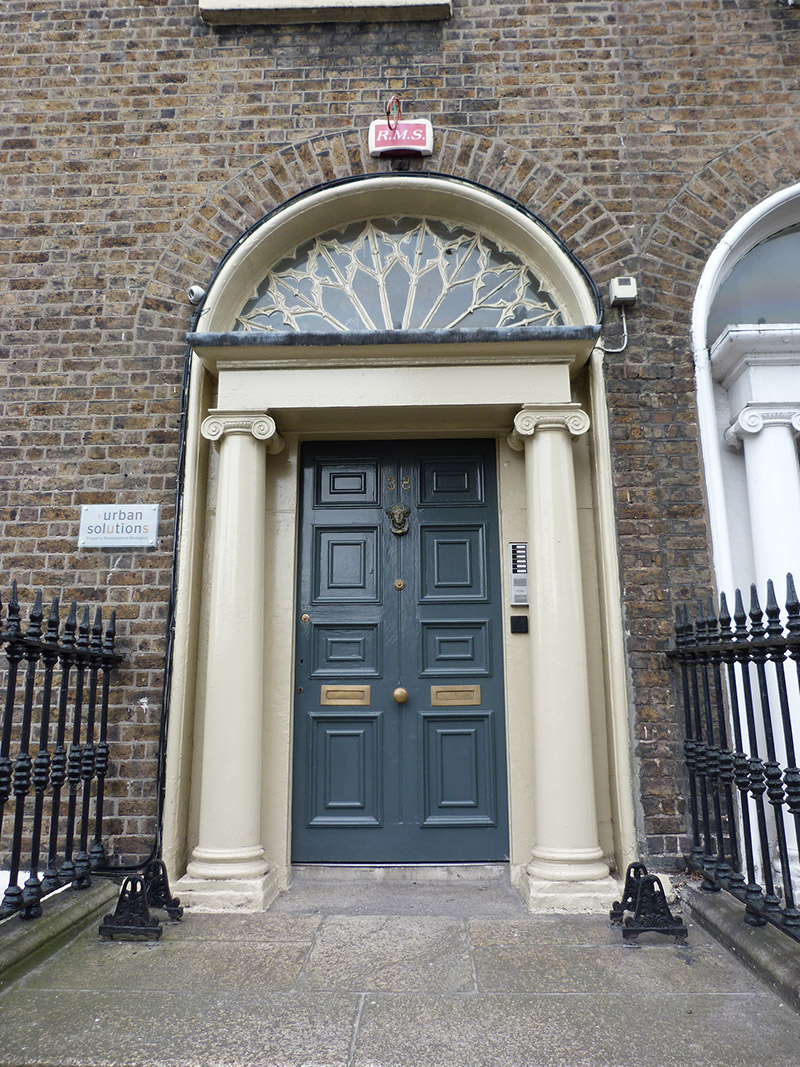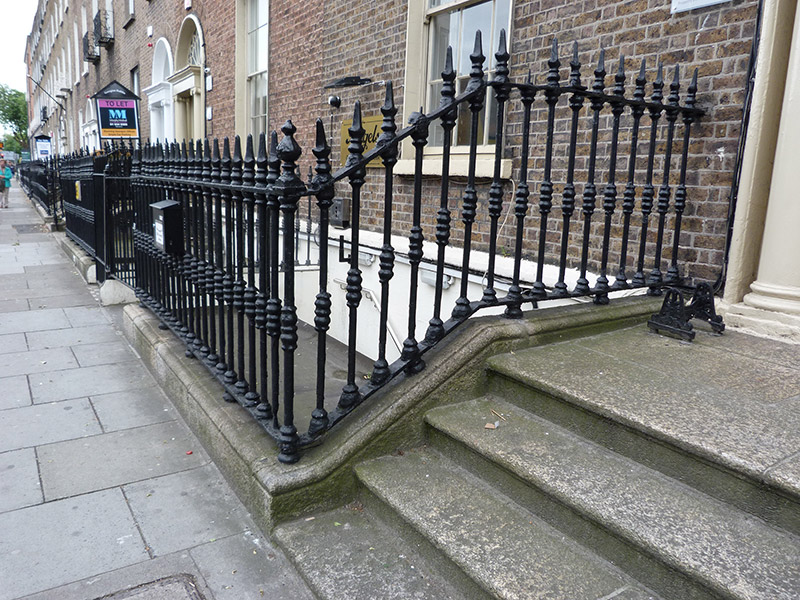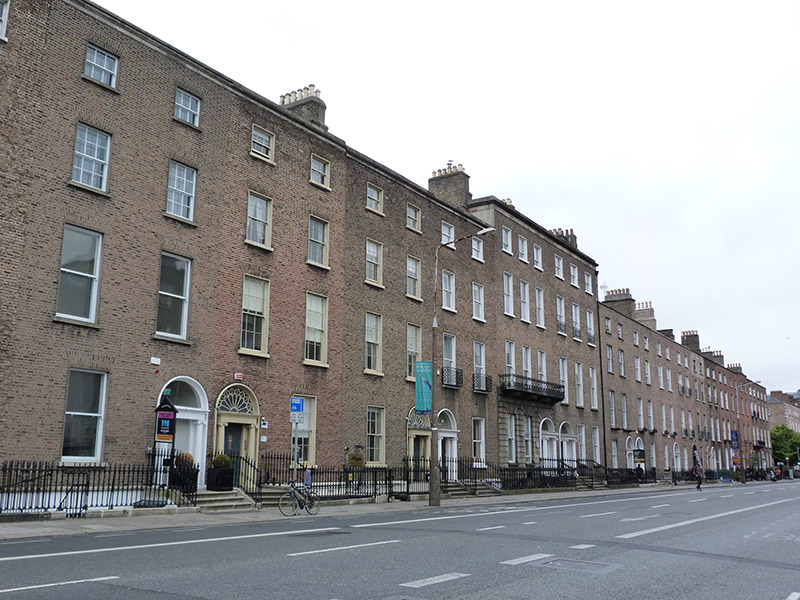Survey Data
Reg No
50110497
Rating
Regional
Categories of Special Interest
Architectural, Artistic
Original Use
House
In Use As
Office
Date
1820 - 1840
Coordinates
316337, 232853
Date Recorded
23/06/2017
Date Updated
--/--/--
Description
Terraced two-bay four-storey former house over basement, built c. 1830, as one of pair with No. 37, having three-storey return to rear (west) elevation. Now in use as offices. M-profile pitched roof, hipped to north, hidden behind granite parapet, having carved granite cornice. Rendered chimneystacks with clay pots. Brown brick, laid in Flemish bond, to walls to front and rear elevations, cut masonry plinth course over lined-and-ruled rendered walls to basement to front. Wall to rear refaced to upper storeys. Square and round-headed window openings, having raised render reveals and granite sills. Mixed three-over-three pane and six-over-six pane timber sliding sash and replacement windows. Wyatt windows to rear. Round-headed door opening with moulded render surround and carved stone doorcase comprising Ionic columns and entablature, leaded fanlight and timber panelled door. Shared granite steps, having cast-iron boot-scrapes with Anthemion detailing to platform. Cast-iron railings having spear-head finials and decorative collars on carved granite plinth wall.
Appraisal
Part of a uniform terrace, this building maintains the parapet height and fenestration alignment of neighbouring buildings, making a pleasing contribution to the streetscape. The high level of skill and artisanship evident in the elegant Greek Revival doorcase lends artistic interest to the classically restrained facade. The detailing of the paired boot-scrapes and leaded fanlight lend a sense of grandeur to the composition. The road leading from St. Stephen's Green to Donnybrook was originally called Suesey Street. It was renamed Leeson Street in 1728 to commemorate the Leeson brewing family, who were responsible for significant development in the area. Some Early Georgian houses remain but construction predominantly dates from the late eighteenth to mid-nineteenth centuries.
